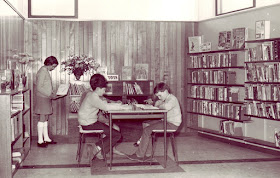The purpose of the Mechanics' Institute of Victoria Historical Plaques Program is to inform the public of the history of Mechanics' Institutes in Victoria, and give a snippet of history about the individual institute. There are already plaques in place on the Minyip Mechanics' building and at the Laen Institute site.
These plaques are similar to those used by Heritage Victoria - an oval shaped blue baked enamel surface with white writing.
 |
| A Heritage Victoria plaque on one of the Foy & Gibson warehouses in Fitzroy Street in Collingwood |

.JPG)

.JPG)
.JPG)







.JPG)
